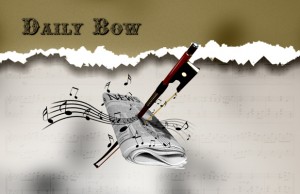 Well, it looks like another year has zipped by again, taking us through some trying times in the classical music community. With the supposed end of the world coming in just a few days (I’m fairly sure all end-of-year articles are obliged to make some kind of Mayan joke), it’s worth taking a look back at a year that has seen a dramatic series of events. The turmoil in the classical music institutions–strikes and lockouts in major symphony orchestras and labor disputes all around–has served to underscore the period of change that classical music has entered. This year, more than ever, it has become apparent that the way things have been will not be the way things are for too much longer. Music students are more and more often encouraged to consider non-traditional career paths, and long-standing institutions are branching out in increasingly creative ways, all to help enhance the longevity of an art form that many fear is facing extinction. The most meaningful trend of the year, some would say, is the rebel classical musician.
Well, it looks like another year has zipped by again, taking us through some trying times in the classical music community. With the supposed end of the world coming in just a few days (I’m fairly sure all end-of-year articles are obliged to make some kind of Mayan joke), it’s worth taking a look back at a year that has seen a dramatic series of events. The turmoil in the classical music institutions–strikes and lockouts in major symphony orchestras and labor disputes all around–has served to underscore the period of change that classical music has entered. This year, more than ever, it has become apparent that the way things have been will not be the way things are for too much longer. Music students are more and more often encouraged to consider non-traditional career paths, and long-standing institutions are branching out in increasingly creative ways, all to help enhance the longevity of an art form that many fear is facing extinction. The most meaningful trend of the year, some would say, is the rebel classical musician.
The L.A. Times chose to dedicate its classical year-in-review article to this trend, as embodied by ensembles like ICE (International Contemporary Ensemble) and wild Up. While vastly different in their approaches and histories, the two ensembles have made a strong showing this year on behalf of the out-of-the-box thinking that has become so crucial to the survival of classical music in today’s market and climate. Brooklyn-based ICE stands as an example of what a start-up can become and how non-traditional career paths can reward those who choose to risk them. Founded ten years ago by then-24-year-old flutist Claire Chase, the ensemble started with a budget of $600 (all Chase had in her pocket) and has since grown into an internationally respected major player with a budget of $1 million, landing Chase with a 2012 MacArthur fellowship. Once a scrappy fringe ensemble, ICE has become a staple–part of the mainstream. While the Times calls ICE’s presentation “unfashionably clean-cut” for its suit-and-tie approach to concert attire, it also deems it a “highly sophisticated ensemble, with big-time chops.” Not too shabby for a 24-year-old’s big risk.
L.A.-based wild Up is a younger ensemble. With roots similar to those of ICE, the decade-younger ensemble is an example of what the evolution of the non-traditional career move looks like: it is a logical extension of the idea that ICE put forth ten years ago. The evolution of wild Up happened rapidly, with the groundwork laid by the boundary-breaking work of many ensembles before them and the path fueled by a climate ripe for change. The Times tells it like this:
The music collective began with a single concert in 2010 in a club. A young conductor, Christopher Rountree, gathered some conservatory students and recent grads who had the attitude that everything is music and that classical music can work just fine in nonclassical venues. The next year the number of concerts increased fourfold. This year, the multiplier was 10, and the venues got somewhat more respectable — Beyond Baroque and the Hammer…Next up wild Up will an ongoing collaboration with yet another notable L.A. start-up, the adventurous new opera company the Industry. It too performs in outsider venues, its first major production having been the premiere of Anne LeBaron’s “Crescent City” in an experimental space in Atwater, with sets by cutting-edge visual artists. The groups have plans for a spring workshop of a contemporary piece called “(First Take).” Suddenly we have alternative opera in L.A.
These two ensembles are just the tip of the iceberg–with big symphonies struggling and audiences waning, classical music has been forced to mutate to fill the niches left empty by the traditional art form. Not all of the new ventures will bear fruit or survive til the next year in review article, but one thing is certain: classical music is hitting the ground with a new game that is light, mobile, and flexible, and the game is bound to keep changing.














No comments yet.